Abstract
In Japan’s plum agriculture, data from 2022 showed that the national harvest volume was 96.6 kilotons and the bearing tree area was 13.5 thousand hectares. Wakayama recorded the largest shipment, at 62.2 kilotons. These figures suggest that plum production is thriving throughout the country, with Wakayama being a particular center of production. In addition, since the area of fruiting trees is proportional to the harvest yield, it is possible that efficient cultivation is being carried out. The exceptionally high shipping volume from Wakayama also suggests that there are differences in production volumes from region to region. These trends suggest regional disparities in plum farming and the growing adoption of efficient production techniques.
Plum harvest volume (main data).
Japan’s plum harvest has fluctuated between 1973 and 2022. The peak was recorded in 1997 at 136 kilotons nationwide, but it has since declined and is now at 70.9%. Characteristics of this period include structural changes in agriculture and the influence of economic conditions. Between the period of high economic growth and the collapse of the bubble economy, agriculture in general was in decline, and plum production declined accordingly. Urbanization and the decline in the agricultural population are also having an impact. Additionally, changes in domestic demand and competition from international markets also affect yields. In recent years, interest in regional development and agricultural sustainability has grown, and the introduction of new cultivation techniques and sales strategies has helped to restore production in some regions; however, overall harvest volumes have yet to reach peak levels. Going forward, efforts will be needed aimed at sustainable plum production, taking into account factors such as changes in demand and climate change.
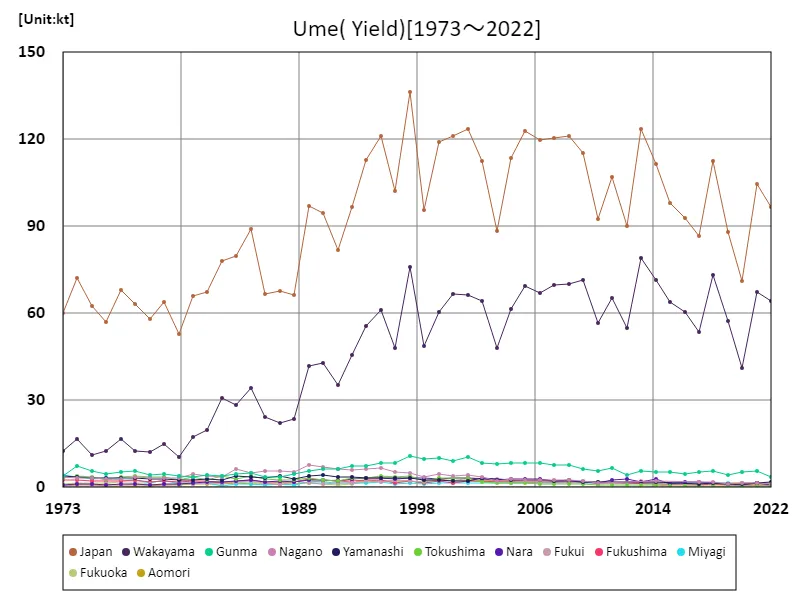

The maximum is 136kt[1997] of Japan, and the current value is about 70.9%
Plum harvest volume (by prefecture).
In Japan’s agricultural plum harvest, the most recent year in 2022, Wakayama recorded the highest overall yield, at 64.4 kilotons. This is the highest value, exceeding past data, and indicates that Wakayama is a major producer of plums. This trend is thought to be due to Wakayama’s geographical conditions and climate being suitable for growing plums. It is also possible that Wakayama’s plum cultivation techniques and production systems are superior to those of other prefectures. Meanwhile, other regions are showing lower production trends, but still suggesting overall yields are increasing or stabilizing. This is thought to be due to advances in agricultural technology, improvements in production management, and the effects of regional agricultural policies. Going forward, there will likely be a need to further improve yields and strengthen production systems in response to changes in regional characteristics and demand.
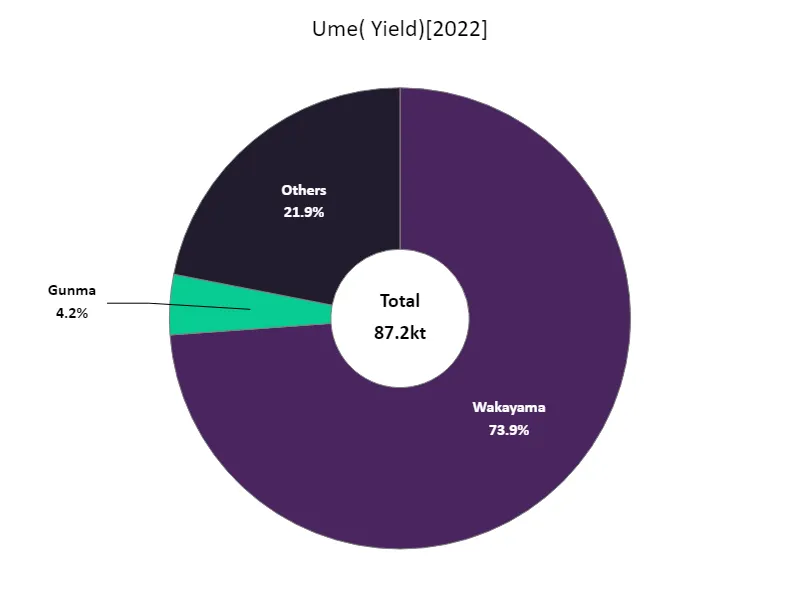

The maximum is 64.4kt of Wakayama, the average is 4.15kt, and the total is 87.2kt
Plum bearing tree area (main data).
The area of Japanese plum bearing trees has fluctuated between 1973 and 2022. The peak was recorded in 2003 at 18,200 hectares nationwide, but it has declined since then and is currently at 74.2% of the peak. Characteristics of this period include structural changes in agriculture and the influence of economic conditions. Between the period of high economic growth and the collapse of the bubble economy, agriculture in general was in decline, and the area cultivated with plums decreased accordingly. Urbanization and the decline in the agricultural population are also having an impact. Additionally, changes in demand and competition from international markets are also affecting bearing tree area. On the other hand, interest in regional development and agricultural sustainability has grown in recent years, and there has been a trend for the area under cultivation to increase in some regions. However, overall bearing tree area has yet to reach peak levels. Going forward, policies and initiatives will be needed to promote sustainable plum cultivation, taking into account factors such as changes in demand and climate change.
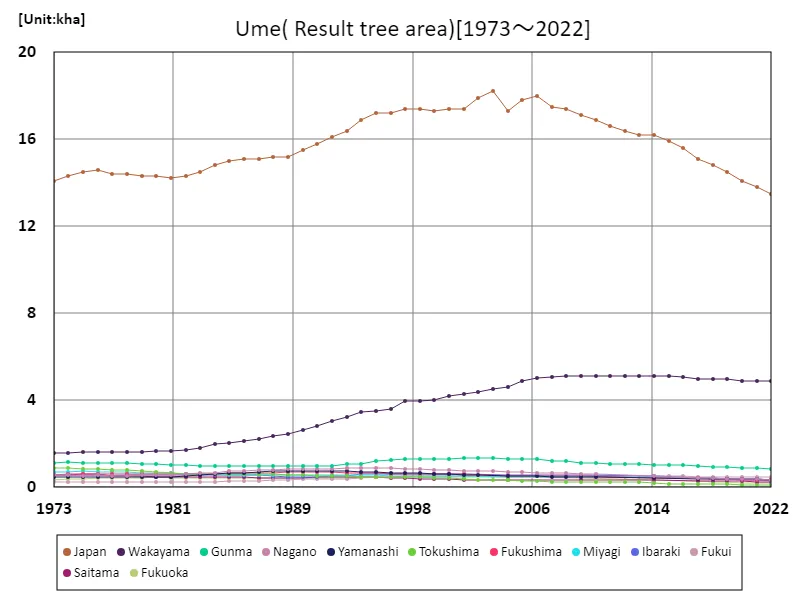

The maximum is 18.2kha[2003] of Japan, and the current value is about 74.2%
Area of plum bearing trees (by prefecture).
In Japan, Wakayama recorded the highest overall area of plum bearing trees in 2022, the latest year, at 4,880 hectares. This is the highest value, exceeding past data, and indicates that Wakayama is a major producer of plums. This trend is thought to be due to Wakayama’s geographical conditions and climate being suitable for growing plums. It is also possible that Wakayama’s plum cultivation techniques and production systems are superior to those of other prefectures. Meanwhile, other regions show trends towards lower bearing tree area, but still suggest overall area is increasing or stabilizing. This is thought to be due to advances in agricultural technology, improvements in production management, and the effects of regional agricultural policies. In the future, there will likely be a need to further expand the area and strengthen production systems in response to changes in regional characteristics and demand.
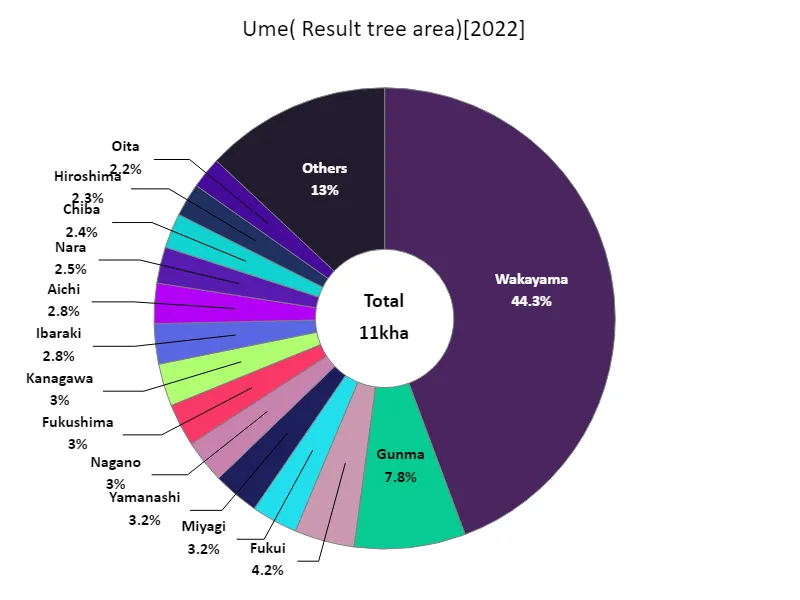

The maximum is 4.88kha of Wakayama, the average is 524ha, and the total is 11kha
The volume of plums shipped.
In Japan’s most recent plum shipments for 2022, Wakayama recorded the highest overall volume, at 62.2 kilotons. The average shipment is 3.82 kilotons, with an overall total of 80.3 kilotons. While Wakayama accounts for the majority of shipments, other regions also actively ship plums. This suggests that Wakayama is the main producer of plums, but production also occurs in other regions. Additionally, the relatively low average shipping volume suggests that production scale and demand vary from region to region. Additionally, with total shipments being less than the overall maximum, supply may not be keeping up with demand in some areas. These trends suggest that while plum production is thriving, centered around Wakayama, there are regional variations and that adjustments between supply and demand are important. In the future, it will be necessary to build a more efficient plum supply system while taking into account changes in demand and improvements to the production system.
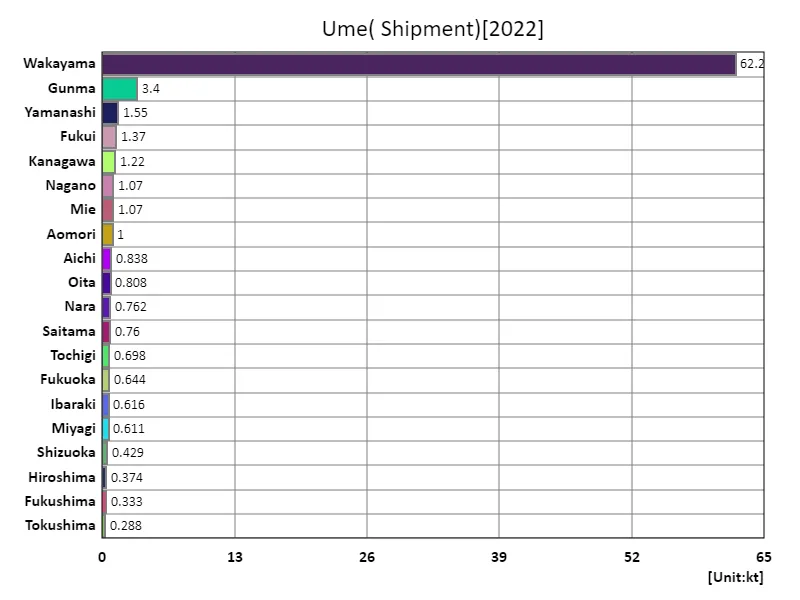

The maximum is 62.2kt of Wakayama, the average is 3.82kt, and the total is 80.3kt
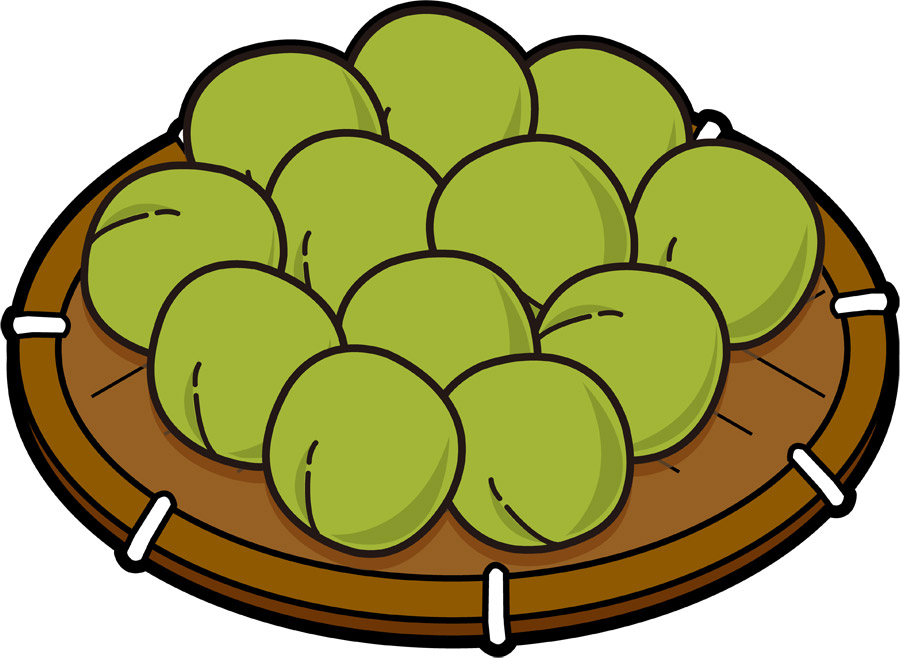


Comments